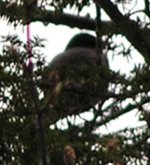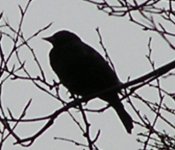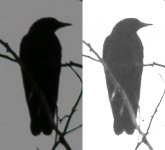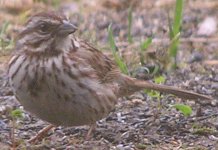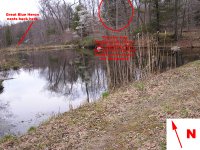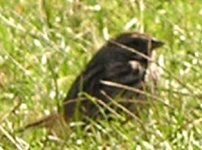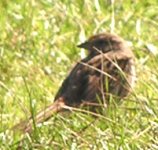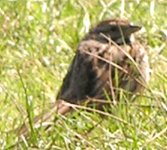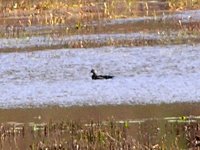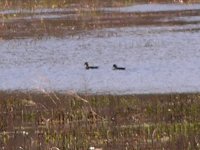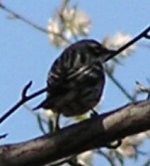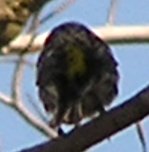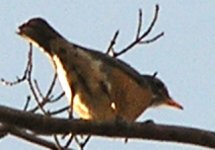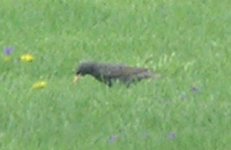gthang
Ford Focus Fanatic: mmmmmm... 3.1415926535.....
Hey, i saw a couple of birds with silohuettes i've never seen before (not that I can recall, anyway), and was wondering if someone could help me out. I know the pictures are not that good, but it was an overcast day, and the birds never moved from their perches.
I saw these two birds down at the pond (pond picture included too!) and for the first bird, I snapped a front shot, then quickly moved a couple hundred feet around my initial starting point to photograph the rear of the bird. The third picture is of something I believe to be a grackle or something with a large bill. To me, the bill resembles those found on a cormorant or an anhinga, but shorter.
I have enclosed a picture of the pond itself (more like a small lake in size though), and have edited to show points of interest. the nesting site of the GBH is sort of a pond/marsh, and really, there's so much terrain variation here, it's almost like it's manmade. the foreground body of water is a pond, and the nesting site, is sort of pond/marsh like, then towards the east, is a bog (since I don't know what a bog really looks like, i use this term to describe a large body of water that often surrounds gaggles of trees). then, further east, is a small creek, home to dozens of tiny fish and other wildlife. Towards the north from the creek is a huge coniferous forest, home to a couple of Pileated Woodpeckers, deer, and other critters. This coniferous forest is in the middle of a deciduous forest. Like I said, over a huge area, this uncleared land area (unsettled by humans) is rife with wildlife, and terrain varies greatly.
I have also included a sparrow picture. I think it's a song sparrow, but given the overcast conditions, it doesn't look right to me. Maybe someone could validate this bird for me.
I saw these two birds down at the pond (pond picture included too!) and for the first bird, I snapped a front shot, then quickly moved a couple hundred feet around my initial starting point to photograph the rear of the bird. The third picture is of something I believe to be a grackle or something with a large bill. To me, the bill resembles those found on a cormorant or an anhinga, but shorter.
I have enclosed a picture of the pond itself (more like a small lake in size though), and have edited to show points of interest. the nesting site of the GBH is sort of a pond/marsh, and really, there's so much terrain variation here, it's almost like it's manmade. the foreground body of water is a pond, and the nesting site, is sort of pond/marsh like, then towards the east, is a bog (since I don't know what a bog really looks like, i use this term to describe a large body of water that often surrounds gaggles of trees). then, further east, is a small creek, home to dozens of tiny fish and other wildlife. Towards the north from the creek is a huge coniferous forest, home to a couple of Pileated Woodpeckers, deer, and other critters. This coniferous forest is in the middle of a deciduous forest. Like I said, over a huge area, this uncleared land area (unsettled by humans) is rife with wildlife, and terrain varies greatly.
I have also included a sparrow picture. I think it's a song sparrow, but given the overcast conditions, it doesn't look right to me. Maybe someone could validate this bird for me.
Attachments
Last edited:




